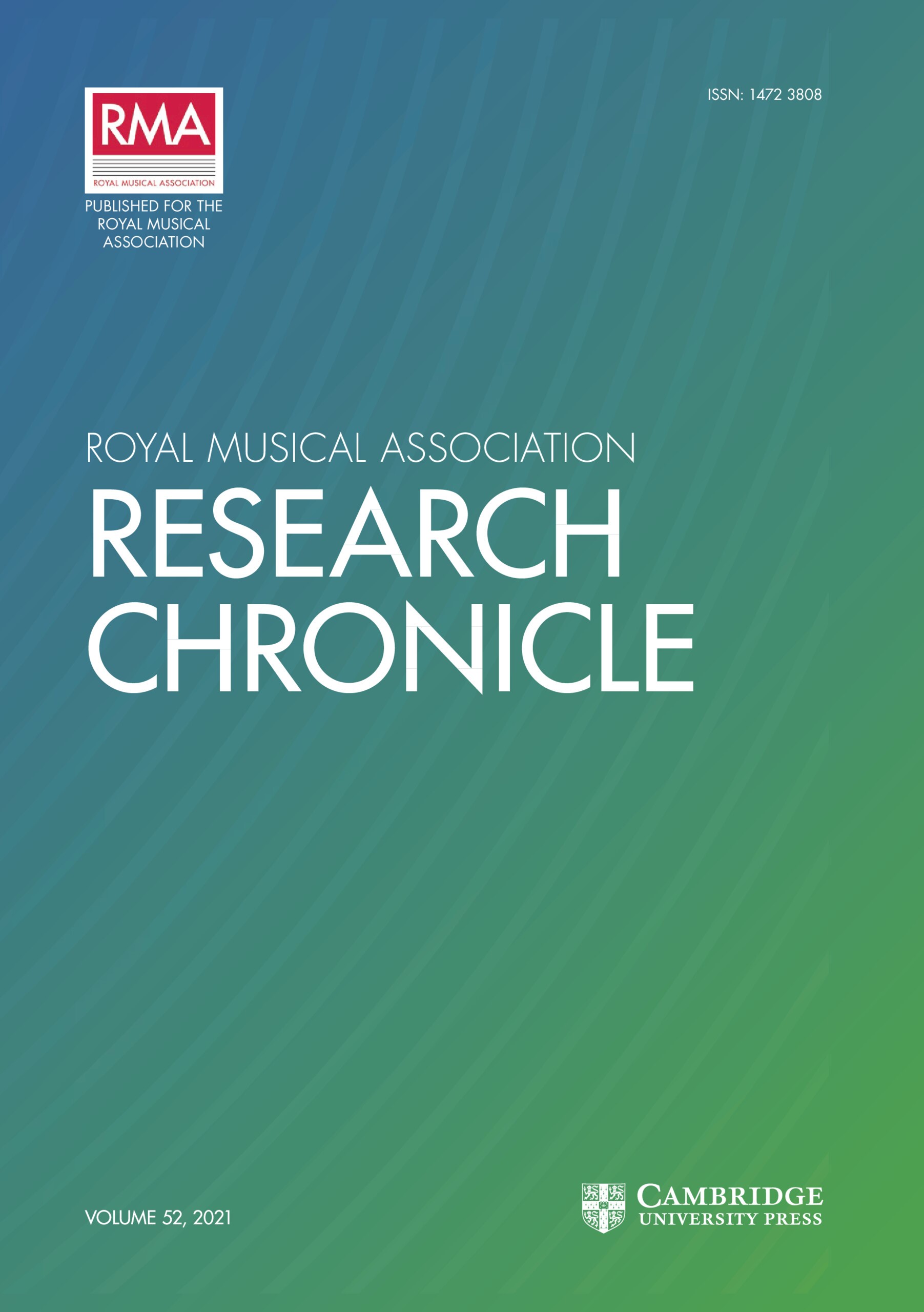Article contents
The Compilation of the Gyffard Partbooks
Published online by Cambridge University Press: 01 January 2020
Extract
The ‘Gyffard’ partbooks (British Library, Add. MSS 17802–5) are perhaps the most important source of Tudor sacred music of the mid-sixteenth century, for unlike the only other collection that could reasonably lay claim to that title—the Henrician partbooks at Peterhouse, Cambridge—they have survived intact. Just six of Gyffard's 94 pieces have contemporary concordances, and only three of these are wholly straightforward. Taverner's Western Wind Mass (no. 24) turns up again in John Sadler's partbooks; two voices only of Redford's Christus resurgens (no. 58) are found in Tenbury MS 389 and its companion, the James part-book; and Van Wilder's Pater noster (no. 6) is printed in Susato's Liber quartus ecclesiasticarum cantionum quatuor vocum (Antwerp, 1554). Two of the three problematic items appear to be four-part reworkings of what were originally five-voice pieces. Taverner's Dum transisset (no. 61) appears a5 in both the Dow and Baldwin partbooks; Johnson's Gaude Maria Virgo (no. 85) is found in its five-part version, though textless, in British Library, Add. MS 31390; finally, a fragment of Tye's Western Wind Mass resurfaces in British Library, Add. MSS 18936–9, attributed to ‘Alphonsus’. There are therefore at least 88 unica in Gyffard—a significantly higher proportion than in any other contemporary source of comparable size. Our knowledge of the state of English sacred polyphony on the eve of the Reformation is heavily dependent on these partbooks, for they preserve a representative cross-section of liturgical genres by a wide range of composers encompassing the great and the obscure.
- Type
- Original Articles
- Information
- Copyright
- Copyright © Royal Musical Association, 1993
References
Notes
1 Peterhouse MSS 471–474, now kept in Cambridge University Library.Google Scholar
2 Now on deposit in the Pendlebury Library, Cambridge.Google Scholar
3 'British Museum Add. MSS 17802–5 (the Gyffard Partbooks): an Index and Commentary', Research Chronicle, 7 (1969), 31–50.Google Scholar
4 Without wishing to pre-empt matters raised later in this study, the reader is referred to Figure 6 and asked to compare the ‘g’ of ‘glorificamus’ (f. 25v) with that of ‘unigenite’ and ‘agnus’ (f. 26) with respect to their different tail-strokes; also, the ‘A’ of ‘Alleluia’ in Figure 4 with the ‘A’ of ‘Asperges’ in Figure 1.Google Scholar
5 This is very similar to no. 13154 in C.M. Briquet, Les filigranes, ed. A.H. Stevenson (Amsterdam, 1968); and no. 2163 in E. Heawood, Watermarks mainly of the 17th and 18th Centuries (Hilversum, 1950; repr. Amsterdam, 1970).Google Scholar
6 This scheme may be reversed, of course, if the final fold is different.Google Scholar
7 Catalogue of Manuscript Music in the British Museum, i (London, 1906), 271.Google Scholar
8 Op. cit., 32.Google Scholar
9 A tranchefile (also known as an ‘edge wire’ or ‘water bar wire') is an extra chain half a chain's width in from the shorter edge on both sides of the paper mould.Google Scholar
10 Bramston's Recordare, Domine, testamenti tui (no. 83) is often described as a respond sung during Historia Regum: see Bray, op. cit., 41, and May Hofman and John Morehen, Latin Music in British Sources c.1485–c.1610, Early English Church Music: Supplementary Volume 2 (London, 1987). In another context that could well be the case, but in view of the piece's present position it is best regarded as a votive antiphon sung in time of plague, a use to which we know these words were put. The text also occurs as the Officium (i.e. Introit) to the Missa pro mortalitate evitanda, also known as the Missa tempore pestilentiae: see Missale … Sarum 1504 (STC 16181), ff. I-li, and A. Harford Pearson, The Sarum Missal done into English, rev. 2nd edn (London 1884), 586.Google Scholar
- 4
- Cited by


